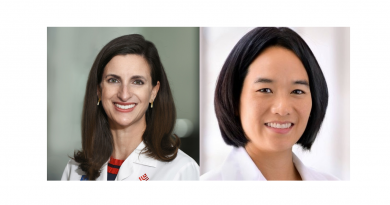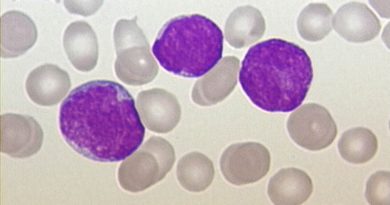Why does late pregnancy increase the risk of breast cancer? The answer rests deep in the cells with a molecule called STAT5

By Ruth SoRelle, M.P.H.
For a long time, scientists and physicians have been plagued by a quandary. Women who had early pregnancies had a decreased risk of developing breast cancer later in life. However, women who gave birth later – over the age of 35 – had an increased risk.
The answer lies in the cells themselves and a molecule called STAT5, said researchers led by those from Baylor College of Medicine . A report on this work appeared in the open-access journal eLife.
Contradictory result
Dr. Yi Li, associate professor in the Lester and Sue Smith Breast Center at Baylor, pondered the problem but he thinks he may be on the track of an answer.
He and his colleagues knew that the hormones of pregnanc y and lactation cause growth of the breast, in part by activating the STAT5 protein. After weaning, the STAT5 protein activity in normal breast cells largely disappears and many of the cells undergo a programmed breakdown called apoptosis, which had been held in check by STAT5.
y and lactation cause growth of the breast, in part by activating the STAT5 protein. After weaning, the STAT5 protein activity in normal breast cells largely disappears and many of the cells undergo a programmed breakdown called apoptosis, which had been held in check by STAT5.
This post-weaning remodeling of the breast leaves the cells less likely to multiply and thus less likely to acquire cancer-causing mutations – hence the protective effect of pregnancy in younger women.
However, older women have longer to have acquired mutations in their breast genes that might have already made a few of their cells precancerous. The gene mutations allow them to retain active STAT5, escape apoptosis or programmed cell death and develop into breast cancer.
Hypothesis confirmed
The group’s studies in mice confirmed their hypothesis that pre-cancerous lesions often retained their pregnancy-caused STAT5 activation, even after weaning. These lesions continued growing after normal cells had ceased to grow or even died. This could lead to cancer.
“You have a persistent survival signal that allows the lesion to expand,” said Li. “With a larger lesion, the risk of breast cancer increases.”
But they also found that after weaning, a short course of a drug that inhibits STAT5 allowed normal apoptosis of these cells and greatly reduced the development of cancers. This suggests the exciting possibility that a similar short treatment with a STAT5 inhibitor after a woman’s late first pregnancy might be able to eliminate the extra risk of breast cancer.

Associate Professor
Lester and Sue Smith Breast Center
Baylor College of Medicine
Indeed, if such a treatment allows apoptosis of potential pre-cancerous lesions, it could help other women at high risk of breast cancer. Treatments for women at high risk currently exist. However, they are anti-estrogenic treatments that have side effects and may still be ineffective against some types of breast cancer.
New study
As a first test of this possibility, Li and his colleagues are already planning a study in women with ductal carcinoma in situ or early premalignant breast lesions who are scheduled for surgery. They will give a STAT5 inhibitor for two weeks and then evaluate the breast tissue after surgery to determine if the women responded. The results of this study might open the door to a larger trial and a new approach to breast cancer prevention.
Li is also a member of the departments of molecular and cellular biology, and molecular virology and microbiology, and the NCI-designated Dan L. Duncan Cancer Center at BCM.
Others who took part in this work include Svasti Haricharan; Jie Dong; Sarah Hein; Jay Reddy; Zhijun Du; Michael Toneff; Kimberly Holloway;Susan Hilsenbeck; Shixia Huang; Carolina Gutierrez; C. Kent Osborne and David Tweardy, all of BCM, Hong Zhang, Rachel Atikinson and Wendy Woodward, all of the University of Texas MD Anderson Cancer Center, and Sonali Jindal, Virginia Borges and Pepper Schedin, all of the University of Colorado Denver.
Funding for this work came from Congressionally Directed Medical Research Programs (Grants BC073703, BC083190, and BC085050), the National Institutes of Health (Grants CA113869, CA124820, CA149783, CA153659, U54CA149196, P30CA125123, P50CA058183, and T32AG000183), the Nancy Owens Memorial Foundation, and the Cancer Prevention and Research Institute of Texas (Grant RP100421).




Pingback: 2014 in review: Baylor College of Medicine highlights | Momentum - The Baylor College of Medicine Blog
Pingback: 2014 in review: Baylor College of Medicine highlights – Baylor College of Medicine Blog Network